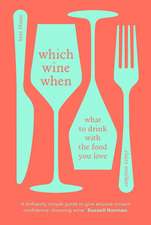Japanese Women Don't Get Old or Fat
Autor Naomi Moriyama, William Doyleen Limba Engleză Paperback – 3 mai 2007
| Toate formatele și edițiile | Preț | Express |
|---|---|---|
| Paperback (2) | 87.43 lei 21-33 zile | +27.45 lei 6-12 zile |
| Ebury Publishing – 3 mai 2007 | 87.43 lei 21-33 zile | +27.45 lei 6-12 zile |
| DELTA – 30 noi 2006 | 107.46 lei 3-5 săpt. |
Preț: 87.43 lei
Preț vechi: 106.16 lei
-18% Nou
Puncte Express: 131
Preț estimativ în valută:
16.73€ • 17.47$ • 13.85£
16.73€ • 17.47$ • 13.85£
Carte disponibilă
Livrare economică 14-26 martie
Livrare express 27 februarie-05 martie pentru 37.44 lei
Preluare comenzi: 021 569.72.76
Specificații
ISBN-13: 9780091907105
ISBN-10: 0091907101
Pagini: 304
Dimensiuni: 129 x 200 x 23 mm
Greutate: 0.21 kg
Editura: Ebury Publishing
Locul publicării:United Kingdom
ISBN-10: 0091907101
Pagini: 304
Dimensiuni: 129 x 200 x 23 mm
Greutate: 0.21 kg
Editura: Ebury Publishing
Locul publicării:United Kingdom
Notă biografică
Naomi Moriyama was born in Tokyo. As a U.S.-Japan marketing consultant, she works with some of the world's leading fashion, luxury, and consumer brands. She lives in New York City with her husband and coauthor, William Doyle, who has written or cowritten five books.
From the Hardcover edition.
From the Hardcover edition.
Extras
Chapter 1
My Mother’s Tokyo Kitchen
The people assemble in joy;
Food and drink is abundant.
For all generations without end,
Day by day ever more flourishing,
Until myriads of years hence
The pleasure will not cease.
—Ancient Japanese blessing
My mother, Chizuko, sends me e-mails from Tokyo all the time. She sends them from her mobile phone–when she’s in the kitchen or the grocery store, when she’s on line to buy tickets to a show, or when she’s waiting for a train in a Tokyo subway station.
She wants to know how my husband, Billy, and I are doing, when we’re coming over to visit–and what we’re eating.
To help us write this book, she’s been sending us her recipes and food tips by e-mail and via fax, sometimes writing little diagrams of vegetables like mountain potatoes. She is a self-taught natural master of Japanese home cooking who never refers to a cookbook. “It’s all in my brain,” she explains.
Like many mothers in Japan and around the world, my mother has always been devoted to giving her family the most healthy and delicious food she can find, as a way of showing her love for them. I see her cooking not just as a sign of love but also as the perfect symbol of why Japanese women are living longer and healthier than everyone else on Earth, and why they (and their husbands) have the lowest obesity rates in the developed world.
My husband and I both have stories to tell that bring those statistics to life. I’ll start with Billy’s story, which began several years ago, when we stayed at my parents’ apartment in Tokyo for a week and experienced–for the first time, in Billy’s case–a total immersion in my mother’s home cooking. I had been back to Tokyo many times over the years, both on business and to visit my family, but when I was there I usually stayed at hotels like the Park Hyatt (the setting of Sofia Coppola’s Lost in Translation). This time, we chose not to stay in a hotel because my parents insisted on our being with them.
For me, that week in My Mother’s Tokyo Kitchen was a delicious reawakening to the tastes and aromas of my youth, of the years before I moved to New York at the age of twenty-seven. For Billy, it was a completely new experience. Billy had been to Tokyo with me once before, but on that trip we had separate business meetings in different parts of town, we stayed in a Western-style hotel, and I was too busy to introduce him to the pleasures of Tokyo food, which was completely foreign and intimidating to him.
He wandered the streets of Tokyo in a state of hungry confusion.
He looked in shop windows and stared at noodle bowls and bento boxes–and he was clueless. He had no idea what or how to order. The food looked strange and the menus were incomprehensible. Food was everywhere–but to him it all seemed out of reach. So he made a beeline for McDonald’s, and chowed down on Big Macs, shakes, and fries almost every day, he confessed later.
At the end of four days in Tokyo, he felt lousy and was five pounds fatter. But during his next trip to Tokyo, after a week of eating only the dishes that emerged from My Mother’s Tokyo Kitchen, Billy had fallen madly in love with Japanese home-cooked food. When we went back to New York, he continued eating Japanese-style food almost exclusively.
For both of us, that week in Tokyo ignited a new passion for the joys of Japanese home cooking. Before that trip, we relied heavily on takeout, frozen dinners, and eating out, just like other New York workaholics. To me, “cooking” meant buying prewashed salad mix from a supermarket, putting it in a pretty bowl, and serving it with a premium-priced dressing. My repertory was otherwise limited to cooking dry pasta in boiling water, sautéing broccoli and tomato, and mixing them with bottled marinara sauce. Preparing a meal from scratch was rare. Who had the time and energy? By the time I left my office in the evening, I was exhausted and left with no brainpower to think about a menu, let alone the energy to wash vegetables and chop them.
But after that week at my parents’ house, Billy and I started to prepare Japanese-style meals at home more and more often, especially after Billy learned to make rice like a professional and even cook miso soup for breakfast. We quickly realized that we could re-create My Mother’s Tokyo Kitchen at our apartment in New York. I began going to local Japanese grocery stores and Whole Foods for tofu, seasoning products like soy sauce, rice vinegar, and miso soup, and the local green market for fresh vegetables, meat, and fish. The more I visited Japanese grocery stores, the more I remembered the kind of dishes I used to eat when I lived with my parents, dishes like sautéed fish and simmered root vegetables.
And the most surprising thing was that the more Japanese home cooking we ate, the leaner, more energetic, and more productive we became, while at the same time feeling completely satisfied after every meal. Part of the reason for writing this book was simply to collect Chizuko’s recipes and techniques so we could tape them to our own refrigerator.
In 2004 we began researching the subject in depth, and discovered a wide range of scientific and journalistic evidence suggesting the health benefits of traditional Japanese home cooking and ingredients and lifestyle habits. This helped explain to us why we looked and felt so much better after we started cooking the way my mother does.
Japanese food, in many ways, has already become American food.
But I want to reassure you that this is not a cuisine you will find intimidating, even though aspects of it are very different from what you may be used to.
Across the nation, Americans have fallen in love with Japanese restaurants and takeout sushi. In Houston alone there are more than a hundred Japanese eateries. Japanese foods and ingredients like edamame, ponzu, wasabi, yuzu and miso have become standard items in non-Japanese restaurant kitchens. Now it’s time to discover Japan’s greatest food secret of all: home cooking.
I left the comfort of My Mother’s Tokyo Kitchen twice. The first time was when I went away to college;the second was when I moved to New York. But twice I returned to it, each time very glad that I did. And now that I’ve re-created a Tokyo kitchen in my own home, I’ll never leave again, at least not for long.
***
A sample recipe from Japanese Women Don't Get Old or Fat
Tokyo Salad
SERVES 4
Salads in Japan are a relatively modern phenomenon. However, sometimes modern is good, such as in this lively herb-filled medley of greens splashed with a light sesame dressing. Most mesclun salad mixes contain mizuna, a feathery Japanese green that adds an invigorating snap. Enjoy this salad during the warmer months.
1/2 pound pencil-thin asparagus, woody stem ends snapped off
6 cups mixed baby greens
1/2 cup thinly sliced celery
1/2 cup diced red bell pepper
1 scallion, roots and coarse portion of the tops cut off,
and thinly sliced
2 tablespoons minced cilantro, plus 4 tiny sprigs for garnish
5 shiso leaves, thinly sliced
1 plum tomato, cored and cut into 12 wedges
Dressing
3 tablespoons rice vinegar
2 tablespoons minced red onion
1 teaspoon light brown sugar
1 tablespoon toasted sesame oil
Pinch of salt and freshly ground black pepper
1. Put 1 cup water in a medium skillet and bring to a boil. Add the asparagus and cook over high heat for 45 seconds, or until a sharp knife easily slides through one stem end. Drain and refresh under cold water. Transfer the asparagus to a plate lined with a double thickness of paper towels and let cool. Cut each spear diagonally into 1-inch-long pieces. Set aside several asparagus tips for the garnish.
2. Combine the cooked asparagus, greens, celery, red pepper, scallion, minced cilantro, and shiso in a salad bowl. Gently toss to mix.
3. In a small bowl, whisk together the vinegar, red onion, and brown sugar until the sugar is dissolved. Whisk in the sesame oil and season with a generous pinch of salt and several grinds of pepper. Pour the dressing over the salad and gently toss to mix. Lay out 4 salad plates. Arrange a portion of salad on each plate and garnish with 3 tomato wedges, the reserved asparagus tips, and the cilantro sprigs.
From the Hardcover edition.
My Mother’s Tokyo Kitchen
The people assemble in joy;
Food and drink is abundant.
For all generations without end,
Day by day ever more flourishing,
Until myriads of years hence
The pleasure will not cease.
—Ancient Japanese blessing
My mother, Chizuko, sends me e-mails from Tokyo all the time. She sends them from her mobile phone–when she’s in the kitchen or the grocery store, when she’s on line to buy tickets to a show, or when she’s waiting for a train in a Tokyo subway station.
She wants to know how my husband, Billy, and I are doing, when we’re coming over to visit–and what we’re eating.
To help us write this book, she’s been sending us her recipes and food tips by e-mail and via fax, sometimes writing little diagrams of vegetables like mountain potatoes. She is a self-taught natural master of Japanese home cooking who never refers to a cookbook. “It’s all in my brain,” she explains.
Like many mothers in Japan and around the world, my mother has always been devoted to giving her family the most healthy and delicious food she can find, as a way of showing her love for them. I see her cooking not just as a sign of love but also as the perfect symbol of why Japanese women are living longer and healthier than everyone else on Earth, and why they (and their husbands) have the lowest obesity rates in the developed world.
My husband and I both have stories to tell that bring those statistics to life. I’ll start with Billy’s story, which began several years ago, when we stayed at my parents’ apartment in Tokyo for a week and experienced–for the first time, in Billy’s case–a total immersion in my mother’s home cooking. I had been back to Tokyo many times over the years, both on business and to visit my family, but when I was there I usually stayed at hotels like the Park Hyatt (the setting of Sofia Coppola’s Lost in Translation). This time, we chose not to stay in a hotel because my parents insisted on our being with them.
For me, that week in My Mother’s Tokyo Kitchen was a delicious reawakening to the tastes and aromas of my youth, of the years before I moved to New York at the age of twenty-seven. For Billy, it was a completely new experience. Billy had been to Tokyo with me once before, but on that trip we had separate business meetings in different parts of town, we stayed in a Western-style hotel, and I was too busy to introduce him to the pleasures of Tokyo food, which was completely foreign and intimidating to him.
He wandered the streets of Tokyo in a state of hungry confusion.
He looked in shop windows and stared at noodle bowls and bento boxes–and he was clueless. He had no idea what or how to order. The food looked strange and the menus were incomprehensible. Food was everywhere–but to him it all seemed out of reach. So he made a beeline for McDonald’s, and chowed down on Big Macs, shakes, and fries almost every day, he confessed later.
At the end of four days in Tokyo, he felt lousy and was five pounds fatter. But during his next trip to Tokyo, after a week of eating only the dishes that emerged from My Mother’s Tokyo Kitchen, Billy had fallen madly in love with Japanese home-cooked food. When we went back to New York, he continued eating Japanese-style food almost exclusively.
For both of us, that week in Tokyo ignited a new passion for the joys of Japanese home cooking. Before that trip, we relied heavily on takeout, frozen dinners, and eating out, just like other New York workaholics. To me, “cooking” meant buying prewashed salad mix from a supermarket, putting it in a pretty bowl, and serving it with a premium-priced dressing. My repertory was otherwise limited to cooking dry pasta in boiling water, sautéing broccoli and tomato, and mixing them with bottled marinara sauce. Preparing a meal from scratch was rare. Who had the time and energy? By the time I left my office in the evening, I was exhausted and left with no brainpower to think about a menu, let alone the energy to wash vegetables and chop them.
But after that week at my parents’ house, Billy and I started to prepare Japanese-style meals at home more and more often, especially after Billy learned to make rice like a professional and even cook miso soup for breakfast. We quickly realized that we could re-create My Mother’s Tokyo Kitchen at our apartment in New York. I began going to local Japanese grocery stores and Whole Foods for tofu, seasoning products like soy sauce, rice vinegar, and miso soup, and the local green market for fresh vegetables, meat, and fish. The more I visited Japanese grocery stores, the more I remembered the kind of dishes I used to eat when I lived with my parents, dishes like sautéed fish and simmered root vegetables.
And the most surprising thing was that the more Japanese home cooking we ate, the leaner, more energetic, and more productive we became, while at the same time feeling completely satisfied after every meal. Part of the reason for writing this book was simply to collect Chizuko’s recipes and techniques so we could tape them to our own refrigerator.
In 2004 we began researching the subject in depth, and discovered a wide range of scientific and journalistic evidence suggesting the health benefits of traditional Japanese home cooking and ingredients and lifestyle habits. This helped explain to us why we looked and felt so much better after we started cooking the way my mother does.
Japanese food, in many ways, has already become American food.
But I want to reassure you that this is not a cuisine you will find intimidating, even though aspects of it are very different from what you may be used to.
Across the nation, Americans have fallen in love with Japanese restaurants and takeout sushi. In Houston alone there are more than a hundred Japanese eateries. Japanese foods and ingredients like edamame, ponzu, wasabi, yuzu and miso have become standard items in non-Japanese restaurant kitchens. Now it’s time to discover Japan’s greatest food secret of all: home cooking.
I left the comfort of My Mother’s Tokyo Kitchen twice. The first time was when I went away to college;the second was when I moved to New York. But twice I returned to it, each time very glad that I did. And now that I’ve re-created a Tokyo kitchen in my own home, I’ll never leave again, at least not for long.
***
A sample recipe from Japanese Women Don't Get Old or Fat
Tokyo Salad
SERVES 4
Salads in Japan are a relatively modern phenomenon. However, sometimes modern is good, such as in this lively herb-filled medley of greens splashed with a light sesame dressing. Most mesclun salad mixes contain mizuna, a feathery Japanese green that adds an invigorating snap. Enjoy this salad during the warmer months.
1/2 pound pencil-thin asparagus, woody stem ends snapped off
6 cups mixed baby greens
1/2 cup thinly sliced celery
1/2 cup diced red bell pepper
1 scallion, roots and coarse portion of the tops cut off,
and thinly sliced
2 tablespoons minced cilantro, plus 4 tiny sprigs for garnish
5 shiso leaves, thinly sliced
1 plum tomato, cored and cut into 12 wedges
Dressing
3 tablespoons rice vinegar
2 tablespoons minced red onion
1 teaspoon light brown sugar
1 tablespoon toasted sesame oil
Pinch of salt and freshly ground black pepper
1. Put 1 cup water in a medium skillet and bring to a boil. Add the asparagus and cook over high heat for 45 seconds, or until a sharp knife easily slides through one stem end. Drain and refresh under cold water. Transfer the asparagus to a plate lined with a double thickness of paper towels and let cool. Cut each spear diagonally into 1-inch-long pieces. Set aside several asparagus tips for the garnish.
2. Combine the cooked asparagus, greens, celery, red pepper, scallion, minced cilantro, and shiso in a salad bowl. Gently toss to mix.
3. In a small bowl, whisk together the vinegar, red onion, and brown sugar until the sugar is dissolved. Whisk in the sesame oil and season with a generous pinch of salt and several grinds of pepper. Pour the dressing over the salad and gently toss to mix. Lay out 4 salad plates. Arrange a portion of salad on each plate and garnish with 3 tomato wedges, the reserved asparagus tips, and the cilantro sprigs.
From the Hardcover edition.
Recenzii
"A DELICIOUS WAY TO STAY HEALTHY."—Washington Post
"[A] well-organized, persuasive introduction to a non-Western everyday cooking plan."—Publishers Weekly
"One-upping a certain French woman who boasted about staying thin, Moriyama reveals seven secrets of how Japanese women avoid adding pounds and prolong their life."—GoodHousekeeping.com
"Thanks to Moriyama and Doyle, readers can learn from an insider raised in Japan. . . . Even the most hesitant readers will find their passion for the wonderful taste and aroma of Japanese dishes irresistible."—The Cleveland Plain Dealer
"[A] well-organized, persuasive introduction to a non-Western everyday cooking plan."—Publishers Weekly
"One-upping a certain French woman who boasted about staying thin, Moriyama reveals seven secrets of how Japanese women avoid adding pounds and prolong their life."—GoodHousekeeping.com
"Thanks to Moriyama and Doyle, readers can learn from an insider raised in Japan. . . . Even the most hesitant readers will find their passion for the wonderful taste and aroma of Japanese dishes irresistible."—The Cleveland Plain Dealer






















